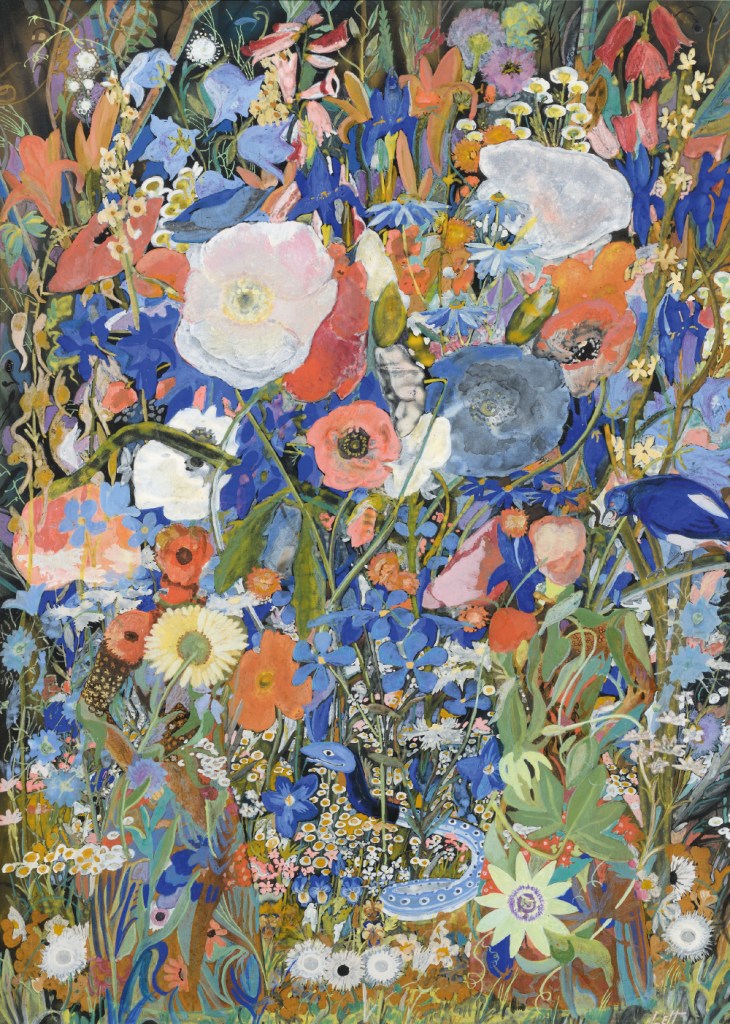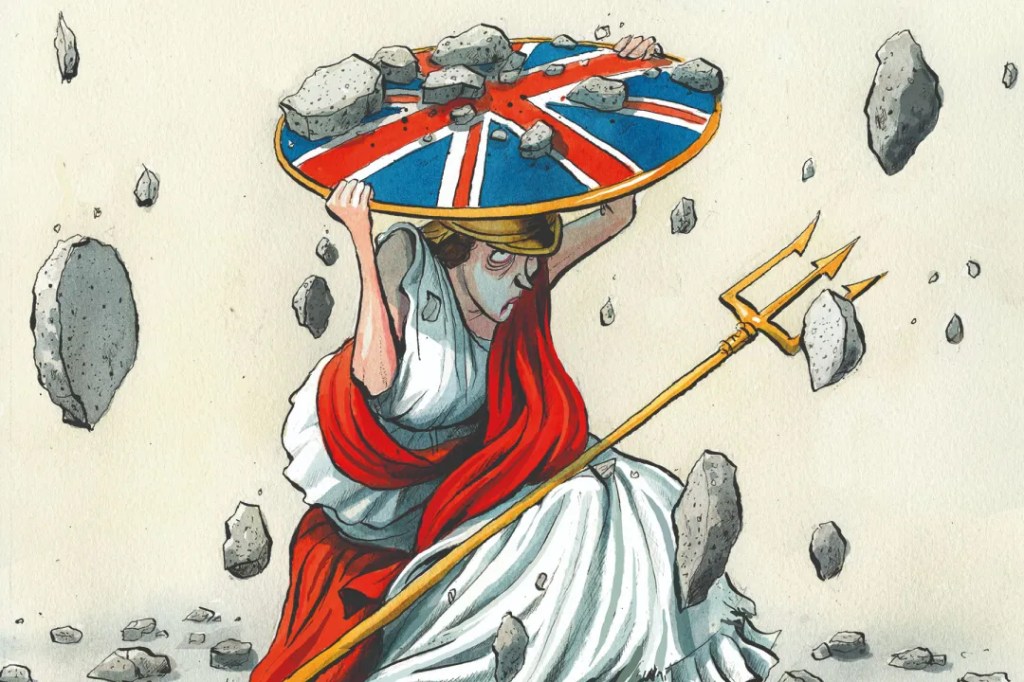When the 15-year-old Maggi Hambling arrived at Benton End in Hadleigh, Suffolk – home of the East Anglian School of Painting and Drawing – with two paintings to show the school’s founders, Cedric Morris and Arthur Lett-Haines, she was ushered into the dining room where Morris was having dinner. He made some criticisms but was very encouraging, then Lett-Haines came in and made the opposite criticisms but was encouraging too. As teachers, both believed in bringing out a student’s native talent – but as artists and characters, says Hambling: ‘They were polar opposites.’
‘Every time I paint a portrait, I lose a friend,’ Morris regretted
One aim of this new exhibition at Gainsborough’s House, their first joint retrospective for 50 years, is to bring Lett-Haines out from under Morris’s shadow. From their first fateful meeting in 1918 at an Armistice Day party, Lett-Haines would devote himself to promoting Morris’s career, then managing – and cooking for – the school they founded together in 1937: ‘Which is why people haven’t heard of Lett,’ explains Hambling. Now, with alumni like Hambling and Lucian Freud, the school’s fame is threatening to eclipse the reputations of both. Benton End was the focus of Firstsite’s 2021 exhibition; this one puts its founders in the frame.
From their formative years in Paris in the 1920s, their two lives ran in parallel but their art diverged. A pair of landscapes they painted in Assisi in 1922 look superficially similar, until you notice the lilac horse Lett-Haines has introduced into his. In Paris he took to surrealism like a duck to water, developing his own rather sinister version: there’s something faintly demonic about the black and blue silhouetted figures cavorting in a half-lit landscape in ‘The Escape’ (1931), and there are shades of Richard Dadd in the dense, over-luscious vegetation of ‘Jeunes Filles aux Fleurs’ (1935) – the ‘jeunes filles’ consisting of a snake and an ominous magpie (see below). His oneiric imagery became even more suggestive with age: in ‘The Martyrdom of Purple Hampton’ (1955), an engorged phallus is apparently about to be clamped between the teeth of a vagina dentata.

But the revelation of the show is the collection of ‘petits sculptures’ he called ‘Humbles’ and assembled from hoarded odds and sods on the ironing board in his room. With its snaggle teeth, single glass eye and crab-shell body fitted with wooden wheels, ‘Sentinel’ (c.1960) is a far more surrealist object than Dali’s ‘Lobster Telephone’ (1938), while ‘Regardant’ (1959) could be a miniature three-dimensional realisation of a Francis Bacon painting.
The show springs some surprises by Morris too. There are plenty of the radiant flower paintings for which he is best known, including his pièce de résistance, ‘Iris Seedlings’ (c.1943), celebrating his passion for the plants of which he became one of the country’s foremost breeders. ‘Benton End tends daily to be less an artist’s house than a commercial nursery,’ grumbled Lett-Haines, but for Morris – one of this country’s greatest colourists – iris breeding was another creative outlet. His affinity with plants and animals, and his keen study of their habits, led him to invest them with almost human characters: his ‘Cabbages’ (1953) are actors in a vegetable drama and his ‘Peregrine Falcons’ (1942) are holding a royal audience. In ‘Landscape of Shame’ (c.1960), a protest against modern farming methods, 20 different species of dead bird are identifiable. A more unusual Morris protest painting is the cartoonish ‘Entry of Moral Turpitude into New York Harbour’ (1926), ridiculing American hypocrisy in refusing entry to the divorced Countess Cathcart on grounds of ‘moral turpitude’. (A decade later, the British monarch would abdicate to marry an American divorcée.)
Another less familiar aspect of Morris’s work are his portraits, of which Gainsborough’s House has been given a large collection. Opinions on them are divided: Hambling regards them as his best work and Freud thought them ‘revealing in a way that was almost improper’. He was thrilled with the pallid portrait Morris painted of him as a 19-year-old student, telling Stephen Spender: ‘It is exactly like my face… green, it is a marvellous picture.’
Not all Morris’s sitters were so appreciative: ‘Every time I paint a portrait, I lose a friend,’ he regretted. His portrait exhibition at Peggy Guggenheim’s gallery in 1938 ended in a dust-up when one of the guests at a private view, reported Guggenheim, ‘so much disliked the portraits that he started burning the catalogues’. After Morris hit him, a ‘battle took place. The walls of the gallery were spattered with blood’.
‘There’s a whole school of thought,’ says Hambling, ‘that Cedric was the painter but Lett-Haines was the artist.’ Both had the sort of independence of vision that can be fatal to artistic reputations, which tend to stick to artists who congregate in groups. One of the few things Morris and Lett-Haines were agreed upon was their hatred of the Bloomsbury Group. On the evidence here, their work is more interesting.








Comments